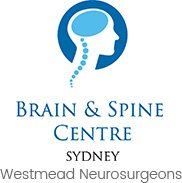Spinal Disorders
Rheumatoid Spine
Rheumatoid arthritis (RA) is an inflammatory condition that can affect multiple parts of the body, including the spine, most commonly at the very top of the neck or cervical spine. There are seven (7) bones (or vertebrae) in the cervical spine.
Ossification of the Posterior Longitudinal Ligament (OPLL)
Ossification of the Posterior Longitudinal Ligament (OPLL) is a condition where the ligament (band of fibres) that runs along the back of the bone (vertebral body) and disc literally hardens into bone.
Spinal Vascular Malformations
Vascular malformations, or blood vessel abnormalities, can affect different parts of the body, including the spine and spinal cord. Spinal vascular malformations comprise several different conditions, including arteriovenous malformations (AVMs), dural arteriovenous fistulae (DAVFs) and cavernomas.
Degenerative Scoliosis
Spinal deformity is the abnormal alignment of the spine due to wear and tear (degenerative) changes of the disc space and the facet joints. It may also be related to previous spinal surgery. The abnormal alignment may be seen as a side to side curve (scoliosis), a forward hunch (kyphosis) or an exaggerated backward curve (swayback or hyper-lordosis).
Basilar Invagination
Basilar invagination is an abnormality at the craniovertebral junctionresulting in the odontoid prolapsing into the already limited space of the foramen magnum. While frequently seen in rheumatoid arthritis, it more commonly presents in a myriad of congenital conditions (eg Chiari malformation, syringomyelia, Klippel-Feil syndrome, and hydrocephalus).
Painful Tailbone (Coccydynia)
Usually related to some traumatic event where the patient has landed quite heavily on their buttocks resulting in severe pain at the tip of the tail-bone(coccyx).
Cervical Canal Stenosis
Cervical stenosis refers to narrowing of the spinal canal at the cervical spine. Compression of the spinal cord and nerve roots can cause pain, numbness and weakness which radiates to the arms and hands, commonly known as cervical radiculopathy.
Degenerative Disc Disease (DDD)
The vertebrae are cushioned by intervertebral discs which act as shock absorbers and allows for bending and twisting of the spine. Over time, these natural shock absorbers wear out and degenerate due to aging, trauma or injury leading to what is known as DDD.
Disc Prolapse or Herniated Disc
The vertebrae are cushioned by intervertebral discs which act as shock absorbers for the spine. The normal intervertebral disc is composed of a nucleus pulposus, at the centre, surrounded by a fibrous ring known as annulus fibrosus.
Lumbar Spinal Stenosis
Lumbar spinal stenosis refers to the narrowing of the spinal canal and /or the vertebral foramina in the lower back.
Mechanical Back Pain
Back pain is a common cause of absence from work that affects approximately up to 80% of the Australian population, at different stages of their life.
Spondylolisthesis
Some cases do not exhibit symptoms however is diagnosed along with other problem. Severe cases often lead to spinal stenosis, nerve compression, pain and neurological injury.
Vertebral Compression Fractures
Vertebral compression fractures can occur as a result of trauma from a fall, a forceful jump, or a car accident or a tumour that spreads to the spine from elsewhere. Vertebral compression fractures usually are caused by osteoporosis, a condition that causes a thinning and softening of the bone.
Whiplash
Whiplash is a soft tissue injury to the neck, usually caused by sudden forceful jerk commonly occurring as a result of an automobile accident, sports injuries, or an accidental fall. Sometimes whiplash may also be referred to as neck strain, neck sprain or hyperextension injury.




